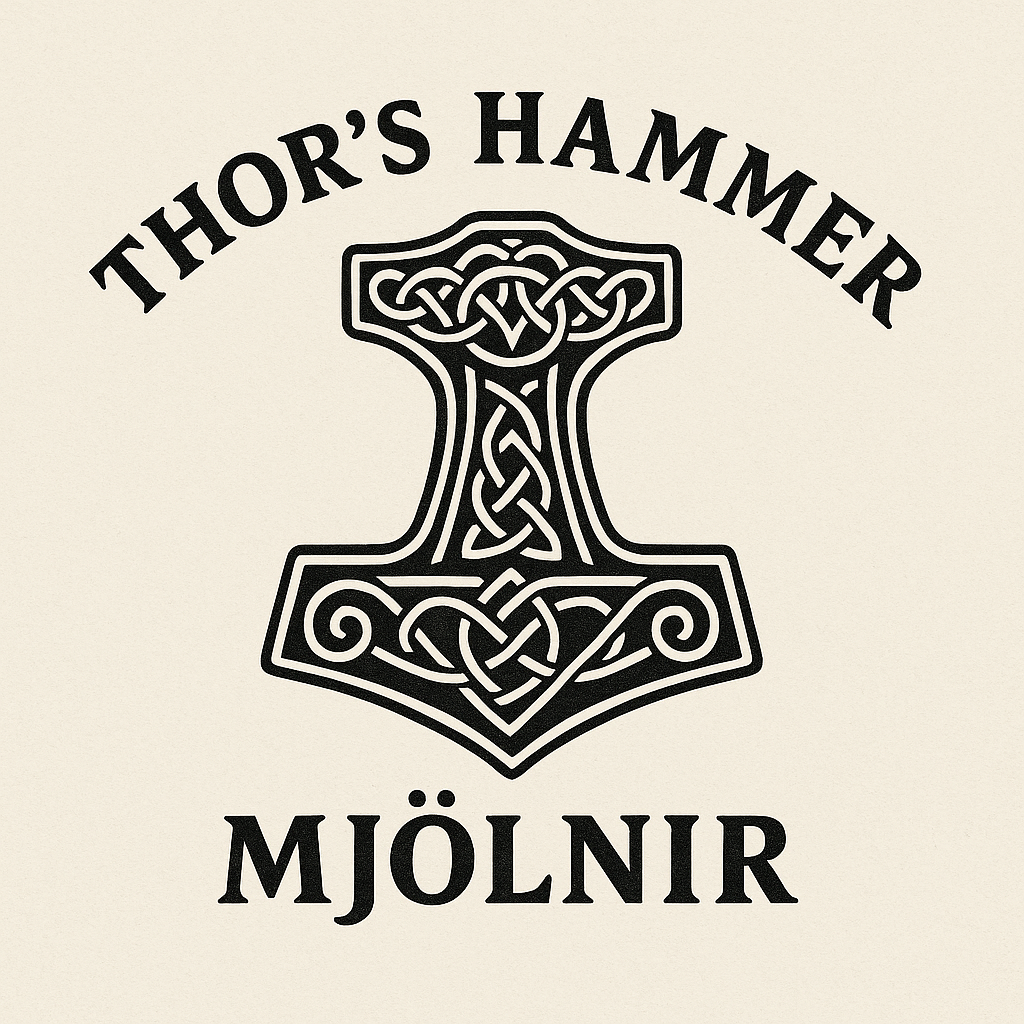

Among the weapons of myth, none is as iconic as Mjölnir, the hammer of Thor, the thunder god. Known for its devastating power and its role in protecting gods and humans alike, Mjölnir is also a profound symbol of consecration and fertility in Norse culture.
⚡ Channel Thor’s Strength — Thor Hoodie
👕 Thor Long Sleeve Available Here
According to the Prose Edda, Mjölnir was forged by the dwarfs Sindri (Eitri) and Brokk, following a wager with Loki. Though the hammer’s handle was made too short due to Loki’s interference, it still became the most formidable weapon in the gods’ arsenal.
The dwarfs’ craftsmanship highlights their role as creators of divine treasures, including Odin’s spear Gungnir and Freyja’s necklace Brísingamen.
🔥 Loki gear coming soon — stay tuned!
Thor used Mjölnir to defend both Asgard and Midgard from the giants. Its thunderous strikes symbolized divine protection against chaos.
In myths, Mjölnir smashes giants, consecrates marriages, and restores order. Its dual role as a weapon and a sacred tool reflects the Norse worldview of destruction and fertility as intertwined forces.
One of the most famous stories in Þrymskviða (from the Poetic Edda) recounts the theft of Mjölnir by the giant Þrymr. He demands Freyja as his bride in exchange for the hammer.
Instead, Thor disguises himself as Freyja, with Loki as his maid, and attends the wedding feast. When Mjölnir is placed in Thor’s lap to consecrate the union, he seizes it and slays Þrymr and the giants.
✨ Honor Freya’s Power — Freya Hoodie
🌸 Freya Tee Available Here
Beyond myth, Mjölnir became a sacred symbol in Viking Age Scandinavia. Hammer amulets have been found across the region, often worn for protection.
Mjölnir symbolized:
Power and Strength — Thor’s might against giants.
Fertility and Consecration — used in rituals, marriages, and blessings.
Identity and Faith — worn as a marker of Norse paganism, especially during Christianization.
At Ragnarök, Thor wields Mjölnir in his final battle against Jörmungandr, the world serpent. Though he kills the serpent, he succumbs to its venom soon after (Völuspá, stanza 56).
Mjölnir thus represents both victory and sacrifice, embodying the dual nature of Norse heroism.
🌟 Baldr collection in development — purity meets power!
Excavations across Scandinavia have uncovered hundreds of hammer pendants. Some feature runic inscriptions like “This is a hammer.” These artifacts suggest Mjölnir’s widespread role as a protective amulet, rivaling the Christian cross.
Today, Mjölnir is one of the most recognized symbols of Norse mythology. It has been adopted by neopagan groups, featured in literature, and even appropriated in pop culture.
Despite reinterpretations, its ancient symbolism remains potent: power, protection, and faith in the face of chaos.
⚡ Channel Thor’s Strength — Thor Hoodie
Mjölnir is more than a weapon — it is a cultural symbol of resilience, fertility, and identity. Its stories reveal Thor as both protector and consecrator, while its archaeological presence underscores its enduring importance.
As both myth and material culture, Mjölnir continues to strike as one of the most powerful symbols of the Norse tradition.
Larrington, Carolyne (trans.). The Poetic Edda. Oxford University Press, 2014.
Faulkes, Anthony. Edda. Everyman, 1995.
Simek, Rudolf. Dictionary of Northern Mythology. Boydell & Brewer, 2007.
Davidson, H.R. Ellis. Gods and Myths of Northern Europe. Penguin, 1964.
Price, Neil. Children of Ash and Elm: A History of the Vikings. Allen Lane, 2020.

